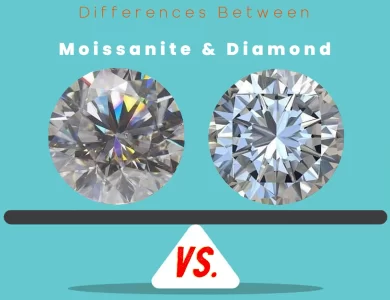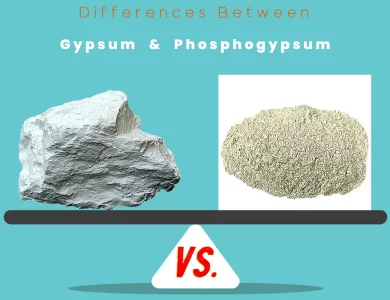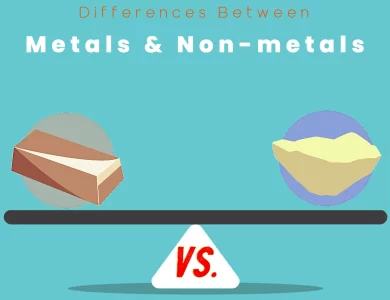
| Aspect | Cementation | Compaction |
|---|---|---|
| Mechanism | Chemical precipitation of minerals to bind sediment | Physical compression due to the weight of overlying sediments |
| Timing | Post-depositional process, starts after sediment deposition | Concurrent with sediment deposition |
| Dominant Minerals | Introduces new cementing minerals | No introduction of new minerals |
| Types of Rocks Formed | Contributes to various sedimentary rock types | Mainly forms fine-grained sedimentary rocks like shale |
| Effect on Porosity | Can either decrease or increase porosity | Generally reduces both porosity and permeability |
| Influence on Rock Texture | Impacts texture and coloration | Leads to fine-grained texture and smoother appearance |
| Environmental Factors | Affected by environmental factors such as mineral-rich fluids | Less influenced by environmental factors |
| Geological Settings | Occurs in environments with mineral-rich water | Ubiquitous in various geological settings |
| Rock Classification | Crucial in classifying sedimentary rocks | Not a primary criterion for rock classification |
Imagine the Earth as a grand sculptor, tirelessly working to craft magnificent rock formations, and these processes as its trusty tools. Now, let’s dive into the heart of this geological masterpiece and uncover the key differences between cementation and compaction, unraveling the mysteries of our planet’s ancient history.
Differences Between Cementation and Compaction
The main differences between Cementation and Compaction lie in their mechanisms and timing. Cementation is a post-depositional process involving the chemical precipitation of minerals to bind sediment particles together, while Compaction occurs concurrently with sediment deposition and results from the physical compression caused by the weight of overlying sediments. Additionally, Cementation introduces new cementing minerals, influencing rock texture and coloration, and is vital for classifying sedimentary rocks. In contrast, Compaction primarily affects the density, grain size, and orientation of sedimentary structures, making it an essential factor in forming fine-grained rocks like shale. These distinctions make Cementation and Compaction crucial processes in the formation and classification of sedimentary rocks.
The Basics
Before we delve into the differences, let’s establish a clear understanding of what cementation and compaction actually are.
Cementation: The Rock-Binding Glue
Cementation is a process in which minerals act as the binding agents, effectively gluing sediment particles together to form solid rock. It’s the geological equivalent of construction workers using cement to hold bricks together when building a wall.
In nature, this process begins with the deposition of sediment particles, such as clay, silt, sand, and gravel, by agents like water, wind, or ice. Over time, these sediment particles accumulate and settle, creating layers. Within these layers, mineral-rich fluids, often carrying dissolved minerals like calcium carbonate or silica, percolate through the gaps between the particles. As these mineral-laden solutions infiltrate the sediment layers, they start to precipitate, forming crystals. These crystals effectively bind the neighboring sediment particles together, transforming loose sediment into solid rock. This is the essence of cementation.
Compaction: The Weighty Business
Compaction, on the other hand, involves the reduction of pore space between sediment particles due to the weight of overlying material. Picture a stack of books pressing down on a pile of soft pillows. As the books exert pressure, the pillows become compressed and take on a more compacted form.
In geological terms, the process begins much like cementation, with the deposition of sediments. As new layers of sediment accumulate on top of older ones, the sheer weight of the overlying material presses down on the lower layers. This pressure squeezes the sediment particles closer together, reducing the gaps or pore spaces between them. Consequently, as compaction continues, the sediment becomes denser and more tightly packed. Over time, these compacted sediments gradually solidify into rock.
Now that we have a clear picture of what cementation and compaction entail, let’s explore the key differences between these two essential processes.
While both cementation and compaction contribute to the formation of sedimentary rocks, they differ significantly in several aspects. Let’s break down these differences:
Mechanism of Rock Formation
Cementation: The primary mechanism in cementation is the precipitation of minerals from mineral-rich solutions. These minerals act as natural “glue” that binds sediment particles together. Think of it as a chemical process where minerals crystallize and solidify the sediments.
Compaction: Compaction, on the other hand, relies on the physical force of pressure. It occurs when the weight of overlying sediments compresses the lower layers, reducing the pore space between particles. This is a purely physical process, with no chemical reactions involved.
Timing and Sequence
Cementation: Cementation typically occurs after the deposition of sediment particles. It’s a post-depositional process that begins once sediments are in place. As mineral-rich fluids percolate through the sediment layers, they gradually cement the particles together.
Compaction: Compaction starts concurrently with sediment deposition. As soon as new sediments are added, the weight of the overlying material begins to compact the lower layers. This process continues throughout sediment deposition.
Dominant Minerals
Cementation: The minerals responsible for cementation can vary widely depending on the specific geological conditions of the region. Common cementing minerals include calcite (calcium carbonate), silica (silicon dioxide), and iron oxides. The type of mineral present often determines the color and texture of the resulting rock.
Compaction: Compaction doesn’t introduce new minerals into the sediment; instead, it reconfigures existing sediment particles. Therefore, the dominant minerals in compacted rocks are the same as those in the original sediments. Compaction mainly affects the arrangement and density of these particles.
Types of Rocks Formed
Cementation: Cementation plays a significant role in the formation of various sedimentary rocks, including sandstone, limestone, and shale. The choice of cementing minerals and the nature of the sediment particles determine the specific type of rock that forms.
Compaction: Compaction contributes to the formation of rocks like shale and mudstone, which tend to have fine-grained sediments. However, it’s important to note that compaction alone may not be sufficient to form some sedimentary rocks; cementation often complements the process.
Effect on Porosity and Permeability
Cementation: Cementation can either decrease or increase porosity and permeability, depending on the type of cementing minerals and the extent of cementation. For example, calcite cement can reduce porosity, making the rock less permeable.
Compaction: Compaction generally reduces both porosity and permeability. As sediment particles are squeezed closer together, the pore spaces are minimized, restricting the movement of fluids through the rock.
Influence on Rock Texture
Cementation: The presence of cementing minerals can impart distinct textures to the rock. For example, well-cemented sandstone may have a gritty texture, while limestone with calcite cement often exhibits a crystalline texture.
Compaction: Compaction primarily affects the overall density and arrangement of sediment particles, leading to a more compacted and fine-grained texture in the resulting rock.
Environmental Factors
Cementation: The rate and extent of cementation can be influenced by environmental factors such as temperature, pH, and the availability of mineral-rich fluids. Different environments can lead to the formation of unique sedimentary rocks.
Compaction: Compaction is less dependent on environmental factors and more influenced by the thickness and weight of overlying sediments. However, the type of sediment and its initial porosity can also play a role in the degree of compaction.
Geological Settings
Cementation: Cementation commonly occurs in environments where mineral-rich water is present, such as riverbeds, lake bottoms, and coastal areas. It is also prevalent in regions with groundwater flow.
Compaction: Compaction is a ubiquitous process that can take place in various geological settings, including terrestrial and marine environments. It is especially prominent in sedimentary basins where thick layers of sediment accumulate.
Significance in Rock Classification
Cementation: The presence of specific cementing minerals can be a defining factor in classifying sedimentary rocks. For example, sandstone with silica cement is classified as “siliciclastic,” while limestone with calcite cement falls into the “chemical” category.
Compaction: Compaction is not typically used as a primary criterion for rock classification, but it does influence the overall characteristics of sedimentary rocks, such as their texture and porosity.
Cementation’s Impact on Sedimentary Rocks
Cementation plays a significant role in determining the texture, composition, and physical properties of sedimentary rocks. The type of cementing minerals present can dramatically alter the rock’s appearance and properties. Here’s a closer look at how cementation affects sedimentary rocks:
1. Texture and Hardness
The presence of cementing minerals gives sedimentary rocks their distinct textures. For instance, sandstone with abundant silica cement often appears gritty and hard due to the crystalline structure of quartz. In contrast, shale cemented with clay minerals may have a smooth, compact texture. The hardness of the rock is also influenced by cementation; well-cemented rocks are generally harder and more resistant to erosion.
2. Coloration
Cementing minerals can impart unique colors to sedimentary rocks. Iron oxide cements, for example, can give rocks hues ranging from red to yellow. Limestone with calcite cement often appears light gray to white. These color variations provide valuable clues about the geological conditions during rock formation.
3. Porosity and Permeability
Cementation can either reduce or increase the porosity and permeability of sedimentary rocks. When minerals fill pore spaces between sediment particles, porosity decreases, making the rock less porous and less capable of holding fluids. Conversely, well-cemented rocks can have higher permeability, allowing fluids to flow through interconnected pore networks.
4. Rock Classification
Cementation is a crucial factor in the classification of sedimentary rocks. It helps distinguish between various rock types, such as clastic, chemical, and biogenic rocks. For instance, limestone, formed primarily through the precipitation of calcium carbonate, is classified as a chemical sedimentary rock.
Compaction’s Influence on Sedimentary Rocks
While compaction doesn’t introduce new minerals into sedimentary rocks, it significantly impacts their physical properties and structure. Here’s a closer look at how compaction influences sedimentary rocks:
1. Texture and Grain Size
Compaction tends to reduce the grain size of sedimentary rocks, resulting in a finer texture. For example, mudstone and shale, which consist of clay and silt-sized particles, are products of intense compaction. The small particle size makes these rocks feel smooth and slippery to the touch.
2. Density and Hardness
As sediments become more compacted, their density increases, making the resulting rock denser and harder. This densification can affect the rock’s resistance to weathering and erosion. For instance, compacted sandstone is harder and more durable than loosely packed sand.
3. Fossil Preservation
Compaction can have a significant impact on the preservation of fossils in sedimentary rocks. In well-compacted rocks like shale, fossils often retain their original details because the fine-grained matrix surrounding them provides support and protection.
4. Orientation of Sedimentary Structures
Intense compaction can alter the orientation of sedimentary structures within rocks. For instance, layers of sediment that were originally deposited horizontally may become tilted or folded due to the pressure exerted during compaction. This can provide insights into geological processes that occurred after sediment deposition.
FAQs
Cementation is a geological process in which minerals act as binding agents, gluing sediment particles together to form solid rock. It occurs after sediment deposition when mineral-rich fluids percolate through the sediment layers, precipitating minerals that bind the particles.
Compaction is another geological process that involves the physical compression of sediment particles due to the weight of overlying sediments. It begins concurrently with sediment deposition and results in the reduction of pore space between particles.
The dominant minerals involved in cementation can vary, but common examples include calcite (calcium carbonate), silica (silicon dioxide), and iron oxides. The specific minerals depend on the geological conditions of the region.
No, compaction does not introduce new minerals into rocks. It mainly affects the arrangement and density of sediment particles, without altering their mineral composition.
Cementation contributes to the formation of various sedimentary rocks, including sandstone, limestone, and shale. The type of cementing minerals and sediment particles determine the specific rock type.
Compaction tends to result in a finer-grained texture in sedimentary rocks. It compresses sediment particles, making the rock feel smoother and often giving it a more compact appearance.
Yes, compaction can influence the preservation of fossils in sedimentary rocks. In well-compacted rocks like shale, fossils often retain their original details due to the fine-grained matrix surrounding them.
Cementation is a crucial factor in classifying sedimentary rocks, as the type of cementing minerals can help classify rocks as clastic, chemical, or biogenic. Compaction, on the other hand, is not a primary criterion for rock classification but affects the overall characteristics of sedimentary rocks.
Read More:
Contents
- Differences Between Cementation and Compaction
- The Basics
- Mechanism of Rock Formation
- Timing and Sequence
- Dominant Minerals
- Types of Rocks Formed
- Effect on Porosity and Permeability
- Influence on Rock Texture
- Environmental Factors
- Geological Settings
- Significance in Rock Classification
- Cementation’s Impact on Sedimentary Rocks
- Compaction’s Influence on Sedimentary Rocks
- FAQs






